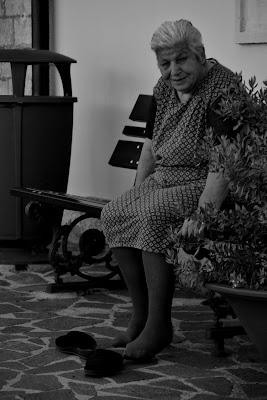9.9.11
Like a meteor in a croatian colony in the South of Italy (Molise)
Gratitudine eccelsa rivolga alla gente di questo piccolo e grazioso borgo di nome Kruc, che con italo-balcanica accoglienza mi ha aperto le porte delle loro case, mi ha invitato alla loro mensa, mi ha offerto i frutti faticosi di queste ardue terre...il tutto condito da sorrisi e calore umano che é ormai difficile trovare tra i miei coetanei e nelle grandi città...la campagna italia ha ancora degli angoli di purezza che tristi governanti non riusciranno, penso mai, a distruggere e a sradicare...
600 years ago...
The language was preserved until today only in the aforementioned three villages, although several villages in Molise and Abruzzo region are aware of their Slavic and Croat ancestry. The existence of this Croatcolony was unknown outside Italy until 1855 when Medo Pucić, a linguist from Dubrovnik, during one of his journeys in Italy overheard a tailor in Naples speaking with his wife in a language very similar to Pucić's own. The tailor then told him that he came from the village of Kruč, then part of the Kingdom of the Two Sicilies. Subsequently the Gajica, the modern Croatian alphabet, was adopted to the language.
The language is highly Italianized. As has been mentioned above, the literati generally borrow forgotten words from modern (ijekavian - the dialect is ikavian) Croatian, but the obligatory Italian translations are seen to follow these words in print.[clarification needed] It also retains many archaic features. As the colony was established before the discovery of the Americas, all the names of animals and plants introduced from the Americas are borrowed from Italian or created from whole cloth.
The language is taught in primary schools and the signs in villages are bilingual.













